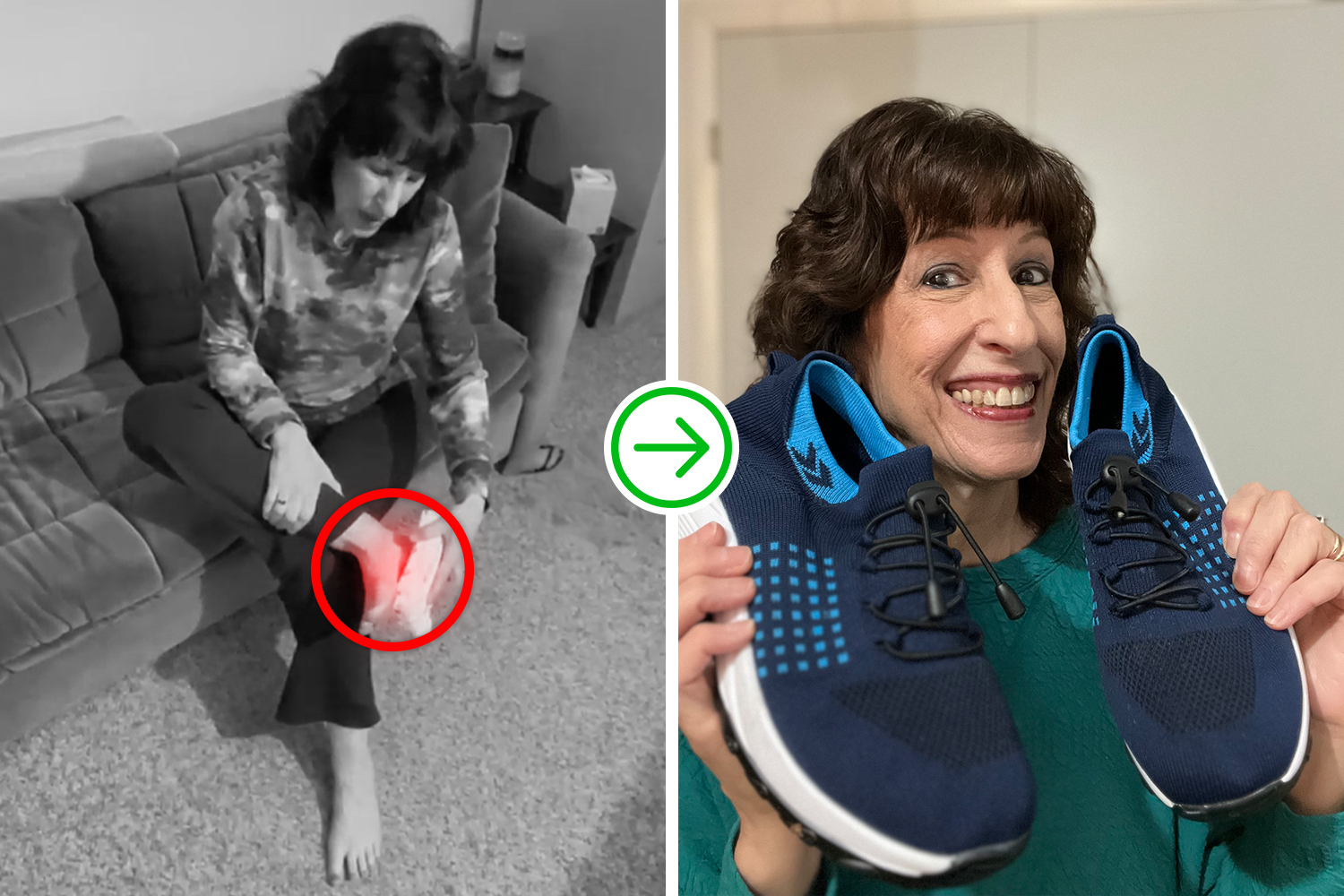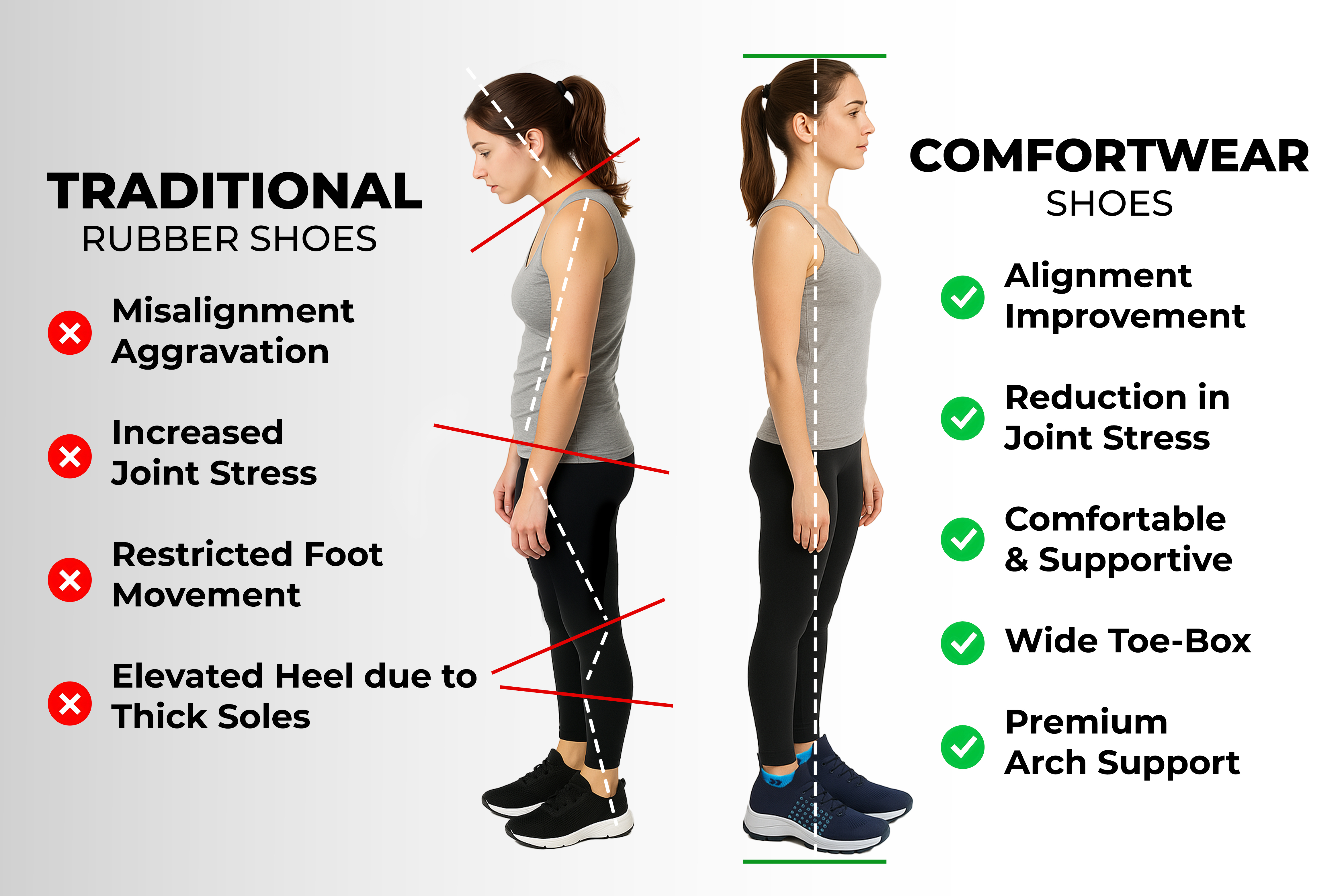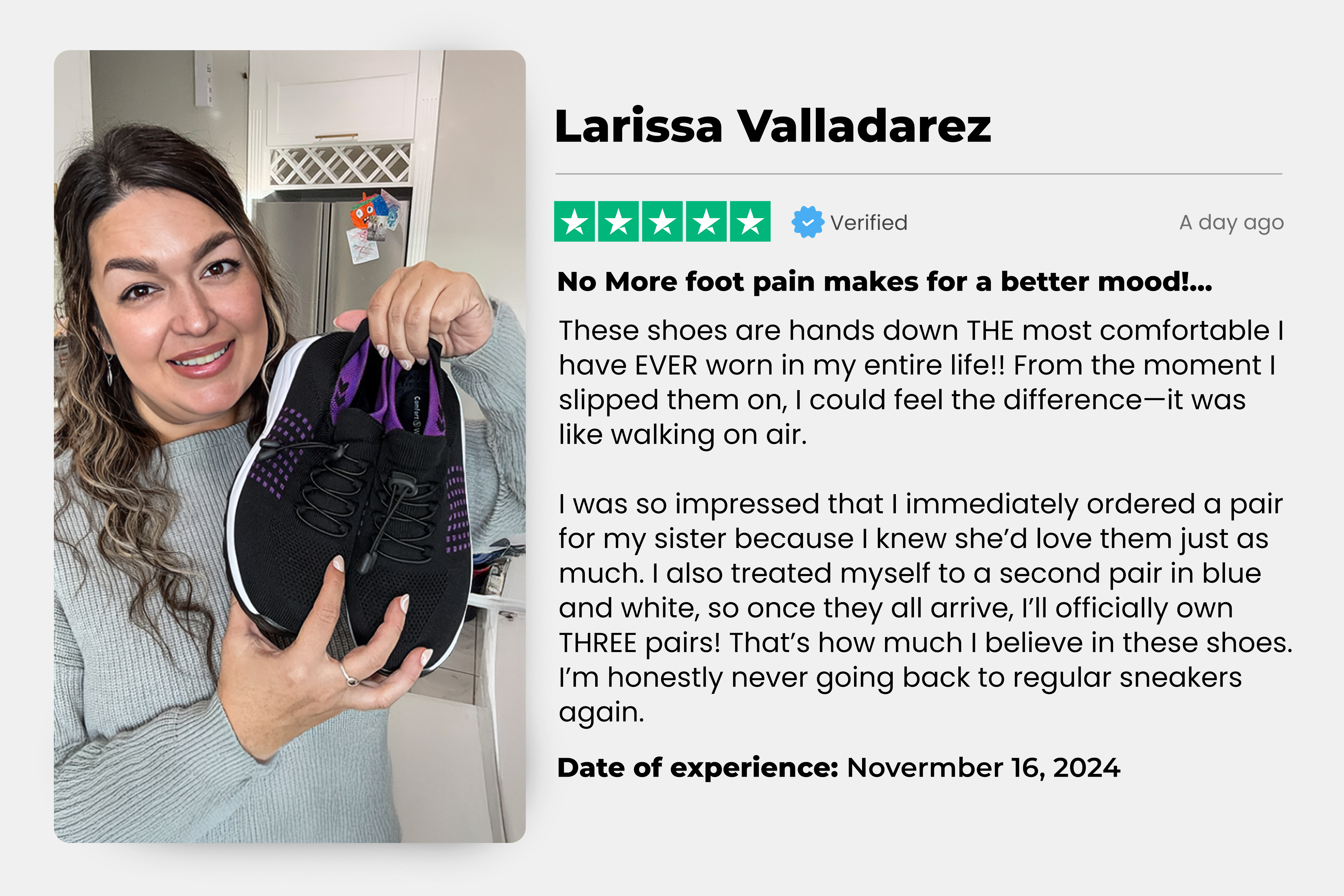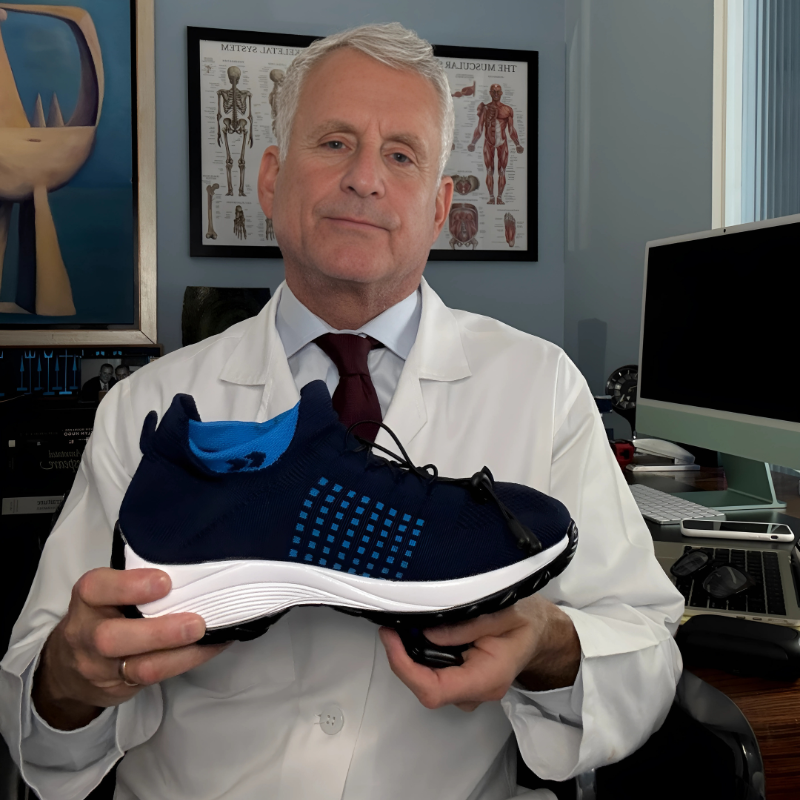🚨 BLACK FRIDAY - 60% OFF SALE 🚨
ORTHOINSIDER
HOME > CURRENT & TRENDING > FOOT PAIN
How Americans Over 72 Are Transforming Their Foot Health Naturally – No Costly Orthotics, No Pain, Just Results
A new footwear company is helping seniors walk pain-free, restoring comfort and mobility without breaking the bank.
January 10th, 2025 | Reading Time: 2 min
Written by Dr. Jesse Ropat

For Americans over age 72, foot pain can feel inevitable. Many “comfort” shoes with hard soles or cramped toe areas make it worse by increasing pressure and restricting natural movement.
ComfortWear’s Ortho Stretch Cushion Shoe takes a different approach: targeted heel cushioning, contoured arch support, a flexible forefoot that eases pressure on sensitive spots, and a lightweight, slip-resistant base, working together to help you walk more comfortably without extra inserts or complicated routines.
Note: This data comes from a research study on foot health, with individuals aged 70+ accounting for 91% of the findings.
Why Traditional Shoes Fail - and Why ComfortWear Shoes Offer a Better Solution
The big footwear brands won’t admit it—but supportive, pain-relieving shoes are what people actually need. Comfort is no longer optional—it’s the new standard.

1. Not addressing root cause: traditional footwear often forces your feet into unnatural positions, disrupting posture and leading to chronic discomfort over time.

2. They lack proper design for natural movement: Narrow, stiff shoes interrupt how your feet are meant to move—creating pressure points and misalignments that only get worse with time.

3. They’re expensive: High-priced brands offer style but often compromise on the essential support your feet need.

CLICK TO UNLOCK OFFER 👉
Comfort-Focused Footwear Is Booming — And ComfortWear Is What Everyone’s Talking About
ComfortWear’s Ortho Stretch Cushion Shoe goes beyond “soft-only” shoes with targeted heel cushioning, contoured arch support, a flexible toe-box, and a lightweight, slip-resistant base, designed to ease day-to-day discomfort from plantar fasciitis, heel pain, arthritis aches, and bunion hot spots. It’s practical support for all-day wear, without constant insert swapping.

Why This Is For You?
Dr. Jesse Ropat is so confident this is the solution for every elderly. 3 reasons:

1
Supportive Comfort: Experience all-day relief with built-in arch support and a flexible, cushioned sole—designed to support your feet while allowing natural movement and alignment.
2
Unmatched Flexibility: Lightweight and ultra-flexible, these shoes move with your feet—not against them. They’re so easy to slip on, it feels like wearing your favorite pair of socks—with way more support.
3
Freedom for Your Feet: Our roomy toe box gives your toes the space to spread naturally—reducing pressure, improving balance, and promoting healthier foot alignment with every step.
CLICK TO UNLOCK OFFER 👉
Free Shipping & Returns - 60% OFF Sitewide

1
Click The Button Below to claim your 60% discount
2
Enjoy 45-Day Money Back Guarantee.
3
Feel supported in every step. Like walking on a cloud.
This exclusive 60% Discount is only available for the first 1000 customers. Don’t miss your chance to take control of your health for just $59.95
Frequently Asked Questions
Why are ComfortWear shoes better than your everyday footwear?
ComfortWear shoes are designed to support the natural structure of your feet—without sacrificing comfort or stability.
Unlike traditional shoes that squeeze your toes and flatten your arch, ComfortWear features a wide toe box, cushioned arch support, and a flexible sole that promotes better alignment, balance, and long-term foot health. Whether you're dealing with plantar fasciitis, heel pain, or just long days on your feet, these shoes are built to relieve pressure and keep you moving comfortably.
Do these actually help with plantar fasciitis?
Yes - our arch support system is specifically designed for plantar fasciitis pain points. The built-in arch bridge redistributes pressure away from your heel and supports your plantar fascia. While not a medical device, 78% of customers with plantar fasciitis report significant pain reduction within 2 weeks.
Note: Not intended to diagnose or treat medical conditions. Consult your doctor for severe cases.
I have wide feet - will these fit?
Our semi-wide toe box accommodates most wide feet. Most of our customers with wide feet find them comfortable when ordering 1/2 to 1 full size up. If you need true wide width (E or EE), these may not work for you. Try them with our 45-day guarantee.
Can I replace the insole in ComfortWear shoes?
Yes! ComfortWear shoes come with a removable insole, so you can easily swap it out for your own custom orthotics or preferred inserts. Whether you need extra arch support or a specialized fit, ComfortWear is designed to adapt to your needs without compromising comfort.
How do we help alleviate knee pain?
Our supportive cushioning, contoured arch support, and ergonomic sole work together to absorb impact and promote proper foot and knee alignment. With the help of a gently curved sole, ComfortWear helps distribute pressure evenly from heel to toe—easing stress on the knees with every step.
What is our shipping and returns policy?
We offer a 45-day money back guarantee. No questions asked.
Wear them at home, around the house, even outside for light activities. If they're not the most comfortable shoes you own, return them for a full refund. We pay return shipping. No restocking fees. No questions asked.
Can I use my HSA/FSA card?
Yes! ComfortWear shoes qualify as medical expenses. Use your HSA or FSA card at checkout. Save 20-30% with pre-tax dollars. (Consult your HSA/FSA administrator if you have questions about eligibility.)

 ...
...